Tamron 100-400 mm f/4.5-6.3 Di VC USD
5. Chromatic and spherical aberration
Chromatic aberration
Longitudinal chromatic aberration won’t be a problem for the tested Tamron at all. We didn’t notice any coloration of blurry areas either at 200 mm or at 400 mm. It is practically the same performance as that of the Sigma 100-400 mm. |
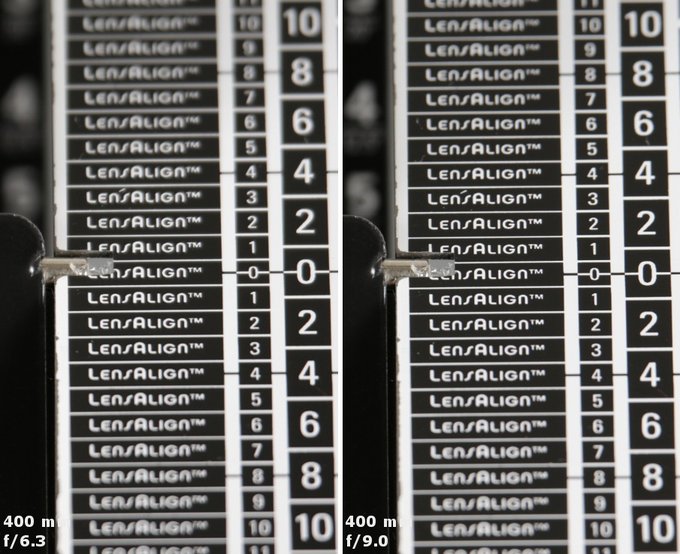 |
Now let’s check the correction of lateral chromatic aberration – graphs below present the performance of the tested lens, depending on the aperture, for the edge of the APS-C/DX sensor and full frame.
Please Support UsIf you enjoy our reviews and articles, and you want us to continue our work please, support our website by donating through PayPal. The funds are going to be used for paying our editorial team, renting servers, and equipping our testing studio; only that way we will be able to continue providing you interesting content for free. |
- - - - - - - - - - - - - - - - - - - - - - - - - - - - - - - - - - - - - - - - - - - - - - - -
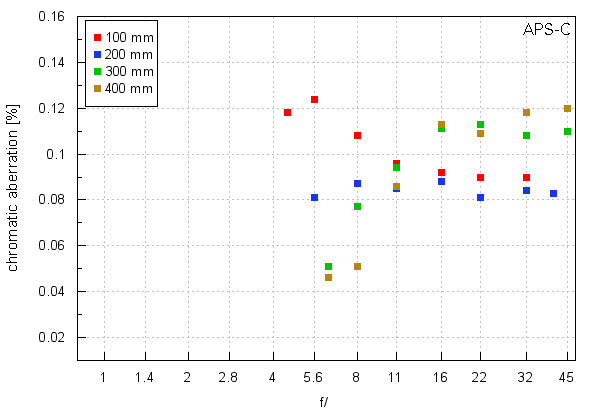
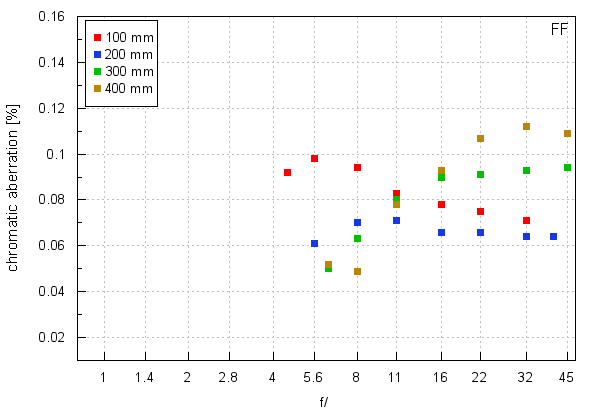
Most of problems occur on both ends of the focal range. At 100 mm, near the maximum relative aperture, chromatic aberration can reach a level of 0.10 – 0.12% and that fact might explain why at that point the tested lens had weaker resolution results on the edge of full frame. The CA values, reached at 400 mm, are a bit less bothersome even if they are equally high as they appear only after a significant stopping down. In the f/6.3-11 aperture range, parameters which are perhaps used most often, they never exceed 0.09%. That aberration is the least bothersome at 200-300 mm and these focal lengths exactly fared the best on the edge of the frame resolution-wise.
The Sigma C 100–400 mm, at the maximum relative aperture and on distinct stopping down, could also reach near 0.1%. Still its problems at 100 mm were less pronounced and it fared well in the middle of the range. Overall its performance concerning the correction of longitudinal CA was a bit better than that of the Tamron but once again the differences were really slight, in many cases being within the margin of error.
| Canon 5D III, RAW, 100 mm, f/5.6 | Canon 5D III, RAW, 400 mm, f/6.3 |

|

|
Spherical aberration
First photos of this chapter don’t feature any ‘focus shift’ effect. Circles of light we got in front of and behind the focus aren’t identical but differences between them can hardly be called huge; mainly they concern the intensity of the rim of the circle. You can safely say the tested Tamron doesn’t have any noticeable problems with spherical aberration. The Sigma C 100-400 mm performed very much the same in this category.
| Canon 5D III, 200 mm, f/5.6, in front of | Canon 5D III, 200 mm, f/5.6, behind |
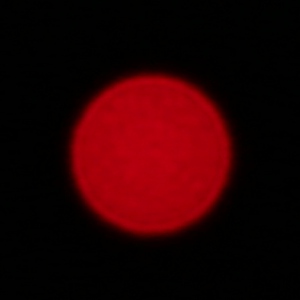
|
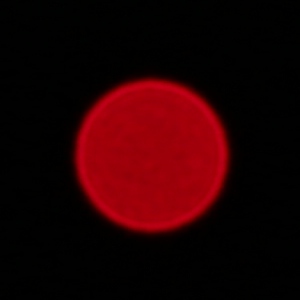
|
| Canon 5D III, 400 mm, f/6.3, in front of | Canon 5D III, 400 mm, f/6.3, behind |
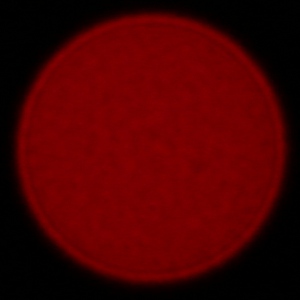
|
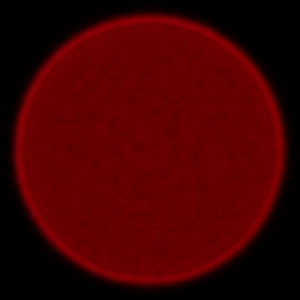
|






